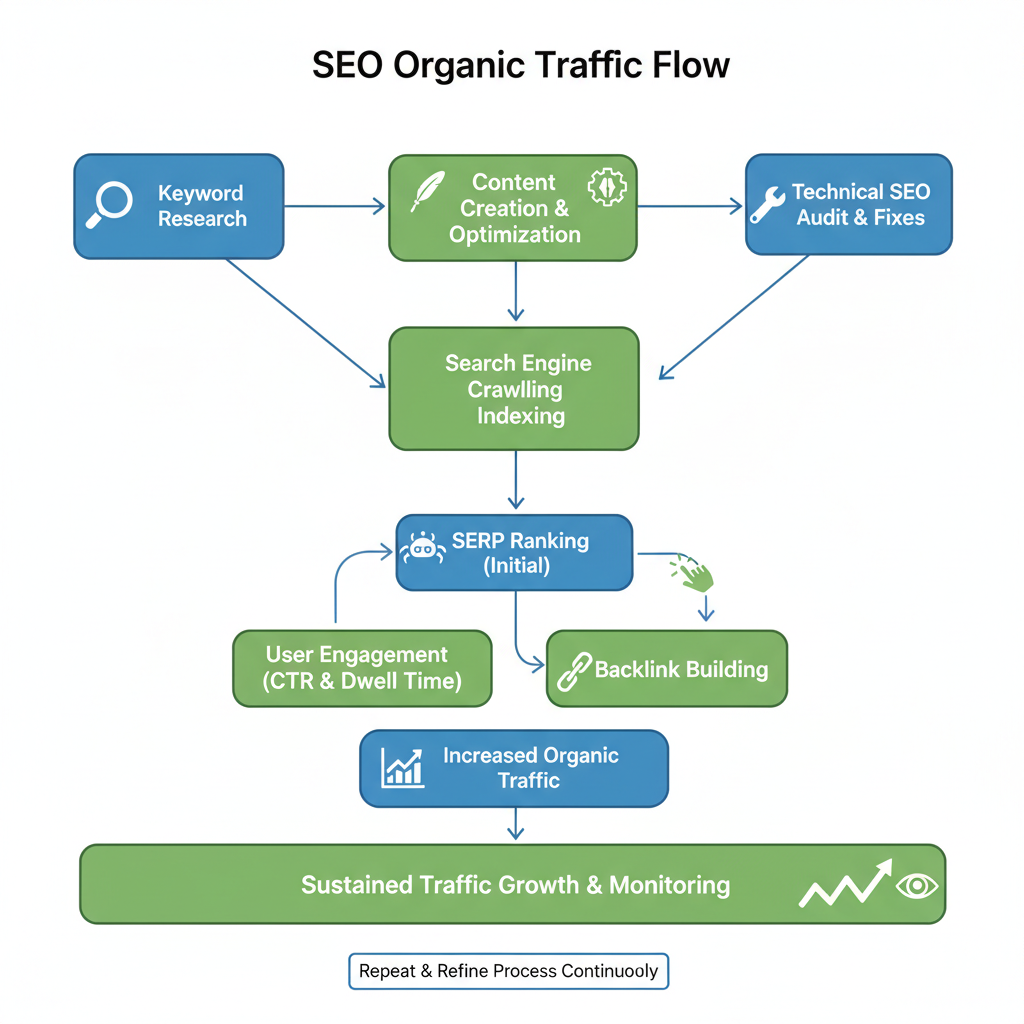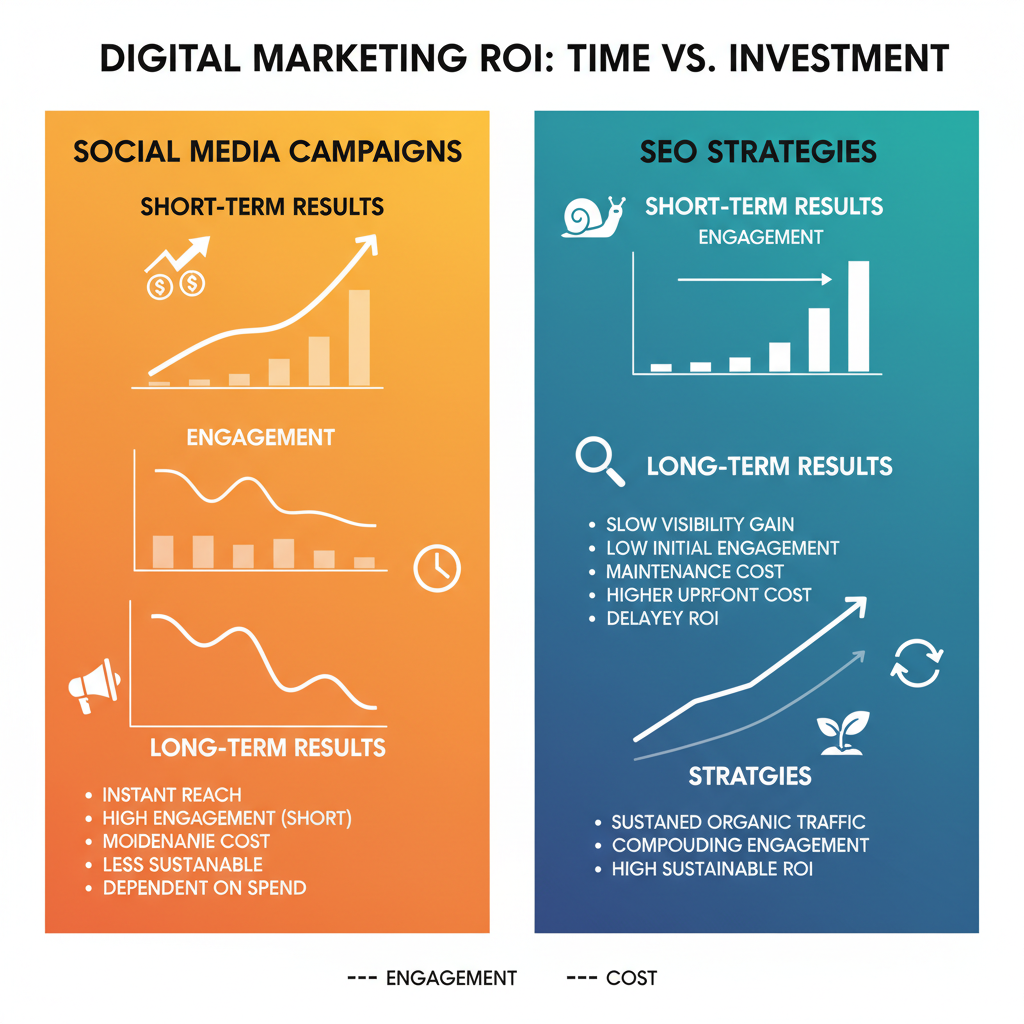Social Media Marketing vs SEO: Choosing the Right Strategy
Learn the key differences between SEO and social media marketing, their benefits, costs, and how to choose or combine them for maximum ROI.

Social Media Marketing vs SEO: Choosing the Right Strategy
In the competitive world of digital marketing, understanding the balance between social media marketing and SEO (Search Engine Optimization) is critical for long-term success. Both strategies offer unique benefits, from driving organic traffic through search engines to building brand awareness via social platforms. This guide breaks down their differences, advantages, and integration opportunities so you can make an informed choice — or smartly combine them — for maximum ROI.

---
Core Differences Between SEO and Social Media Marketing
SEO focuses on optimizing a website’s content and technical setup to improve rankings in search engine results pages (SERPs). It’s about meeting search intent with relevant, high-quality information.
Social Media Marketing concentrates on creating, publishing, and promoting content on platforms like Facebook, Instagram, LinkedIn, and TikTok to engage with audiences directly.
Key Distinctions
- Channel: Search engine queries vs. social media feeds.
- Purpose: SEO targets intent-driven searchers; social media engages communities and sparks interest.
- Timeline: SEO is often long-term; social media can deliver rapid visibility.
---
How SEO Drives Organic Traffic
Successful SEO campaigns revolve around keyword targeting, site architecture, backlink strategies, and content quality.
When a potential customer searches for “best budget laptops,” a well-optimized page can appear at the top of Google’s results, bringing in traffic without ongoing ad spend.

Core elements of SEO include:
- Keyword Research – Identify terms your audience is actively searching for.
- On-page Optimization – Optimize titles, headers, meta descriptions, and images.
- Technical SEO – Improve site speed, mobile responsiveness, and crawlability.
- Link Building – Acquire high-quality backlinks to boost authority.
- Content Creation – Publish informative and evergreen content around targeted queries.
Benefits of SEO
- Sustainable traffic sources once rankings are achieved.
- High conversion rates for intent-driven searches.
- Builds brand authority over time.
---
The Role of Social Media Marketing in Brand Awareness
Social media platforms offer immediate contact with audiences. Through engaging visuals, trending topics, and interactive posts, brands can quickly build recognition and loyalty.
Effective Social Media Marketing focuses on:
- Creating shareable content.
- Running targeted ad campaigns to particular demographics and interests.
- Leveraging influencer partnerships.
- Maintaining consistent brand voice and storytelling.
Unlike SEO, where results depend on algorithmic ranking factors, social media visibility often comes from follower engagement, interaction rates, and paid promotion options.
---
Short-Term vs Long-Term Results
| Strategy | Short-Term Impact | Long-Term Impact |
|---|---|---|
| SEO | Slow to build momentum; initial results may take months. | Long-lasting rankings and steady organic traffic. |
| Social Media Marketing | Immediate engagement; potential viral reach within hours. | Requires ongoing content and ad spend to maintain visibility. |
---
Cost Differences and ROI Considerations
SEO typically requires upfront investment in content creation, optimization, and technical fixes. The ROI grows over time as organic traffic compounds.
Social media marketing often relies on continuous investment in ads, influencer collaborations, and content production. While the ROI can be seen quicker, it often tapers off without sustained effort.
Factors impacting cost:
- SEO Costs: Tool subscriptions, content writers, technical developers, outreach.
- Social Media Costs: Creative resources, ad spend, campaign management fees.
---
Audience Targeting: Search Engines vs Social Platforms
Search engines capture audiences with explicit intent — people searching for a specific service, product, or answer.
Social media targeting is behavior-based and interest-driven, using data about likes, follows, and demographics to deliver content to users who may not be actively seeking your product but are within your target market.
---
Industries Best Suited for Each Approach
| Approach | Best-Fit Industries |
|---|---|
| SEO | eCommerce, SaaS providers, local service businesses, blogs, educational sites. |
| Social Media Marketing | Fashion, lifestyle, entertainment, food & beverage, event promotion. |
---
Integration Strategies: Social Media Boosting SEO & Vice Versa
SEO and social media can complement one another beautifully:
- Social Sharing of Optimized Content – Amplify blog posts and pillar pages through social platforms to increase traffic and potential backlinks.
- Repurpose Social Insights for Content SEO – Use high-engagement social topics to guide SEO keyword targeting.
- Encourage Social Followers to Review & Link – Boost domain authority with verified testimonials and mentions.
---
Case Study: Hybrid Strategy Success
Consider a mid-sized home décor retailer:
- Maintained an SEO strategy targeting keywords like “budget home decoration ideas.”
- Posted short design tips on Instagram and TikTok using popular hashtags.
- Traffic to their blog grew 75% in six months.
- Sales conversion from Instagram swipe-up links increased by 40%.
The synergy lay in cross-promoting blog content that was already optimized for SEO, while social media provided immediate reach and additional backlink opportunities via shares.

---
Practical Tips for Choosing the Right Approach
When deciding between social media marketing or SEO, focus on:
- Business Goals: Are you seeking quick visibility or sustained growth?
- Budget Allocation: Can you invest in ongoing ads, or prefer a one-time content investment?
- Team Capability: Do you have in-house SEO expertise or skilled social media managers?
- Industry Norms: What channels perform best among your competitors?
---
Common Mistakes When Relying Solely on One Strategy
- Ignoring Cross-Promotion Opportunities – Not linking social campaigns with website traffic goals.
- Underestimating SEO Maintenance – Rankings drop if on-site optimization is neglected.
- Burnout in Social Content – Reliance on constant posting without evergreen assets.
- Misaligned Audience Expectations – Failing to match content style to platform norms.
---
Conclusion: Aim for a Blended Marketing Approach
Choosing between social media marketing or SEO doesn’t have to be an either/or decision. SEO builds long-term visibility and credibility, while social media delivers immediate brand engagement and reach.
For sustainable growth, integrating both approaches maximizes your exposure across touchpoints — turning searchers into followers and followers into loyal customers.
Next Step: Assess your current marketing mix and experiment with hybrid strategies to see how SEO and social media can jointly strengthen your brand presence. By weaving together strong SEO foundations with social amplification, you can create a resilient marketing ecosystem that thrives beyond any single campaign.



